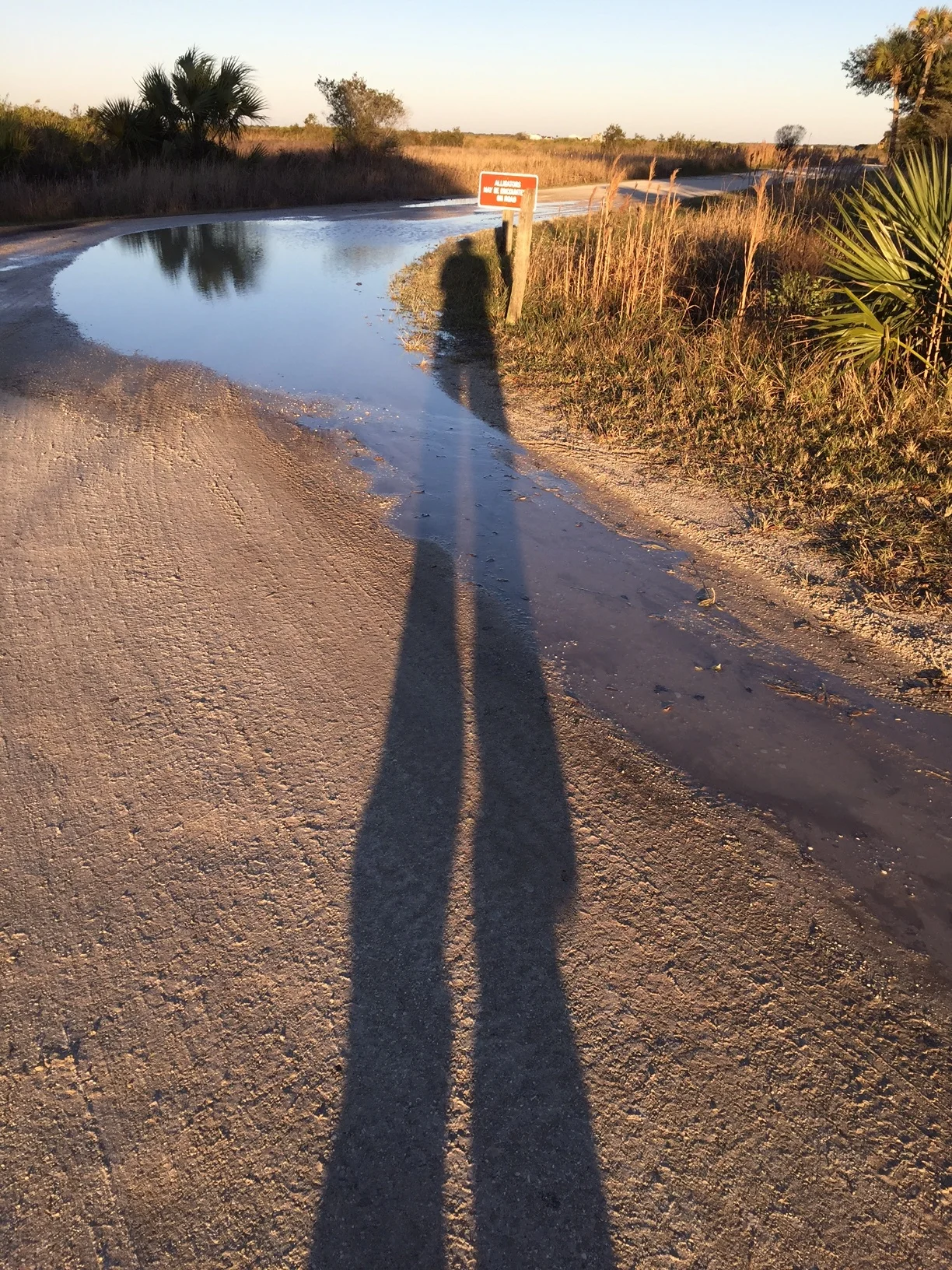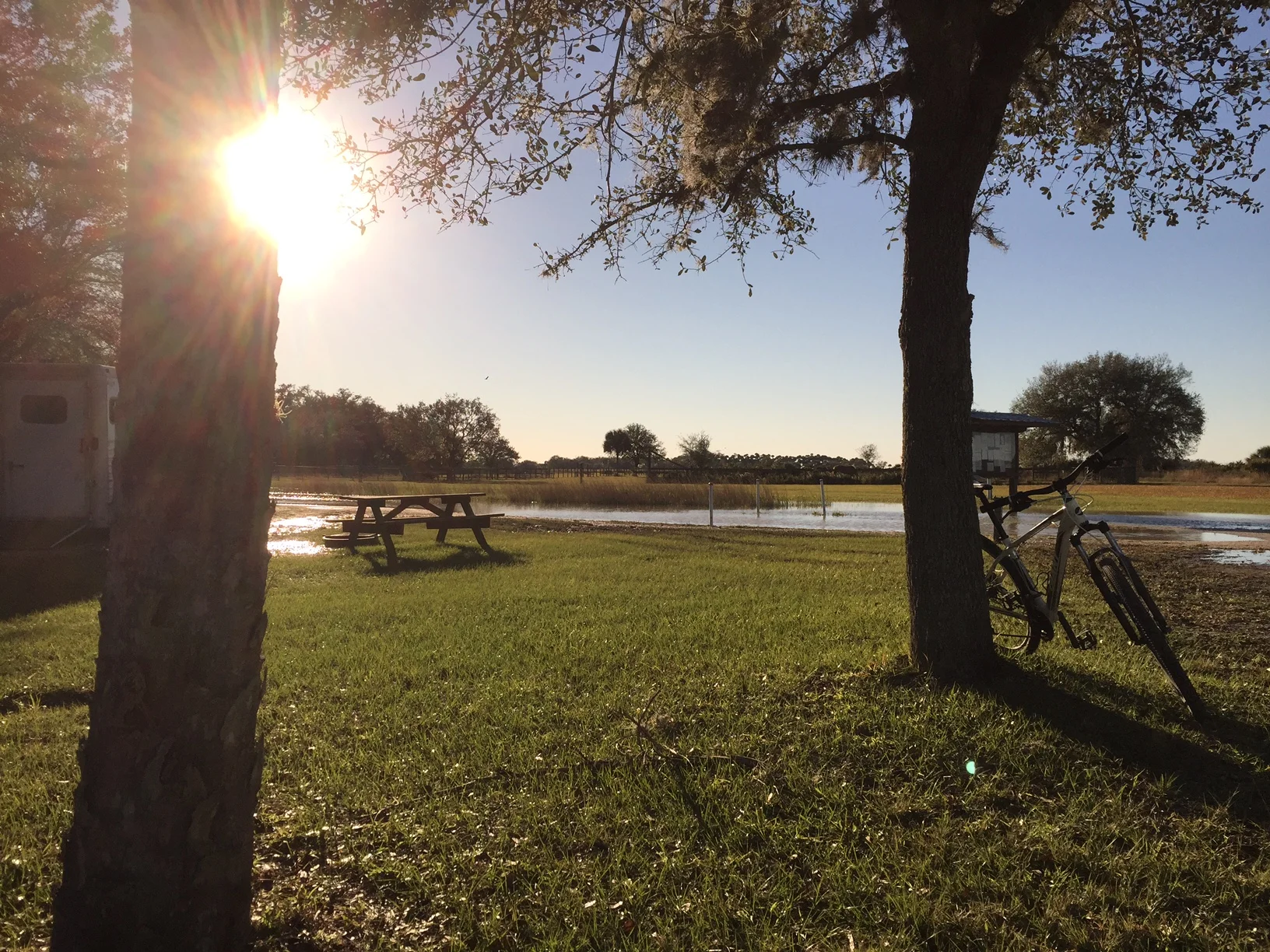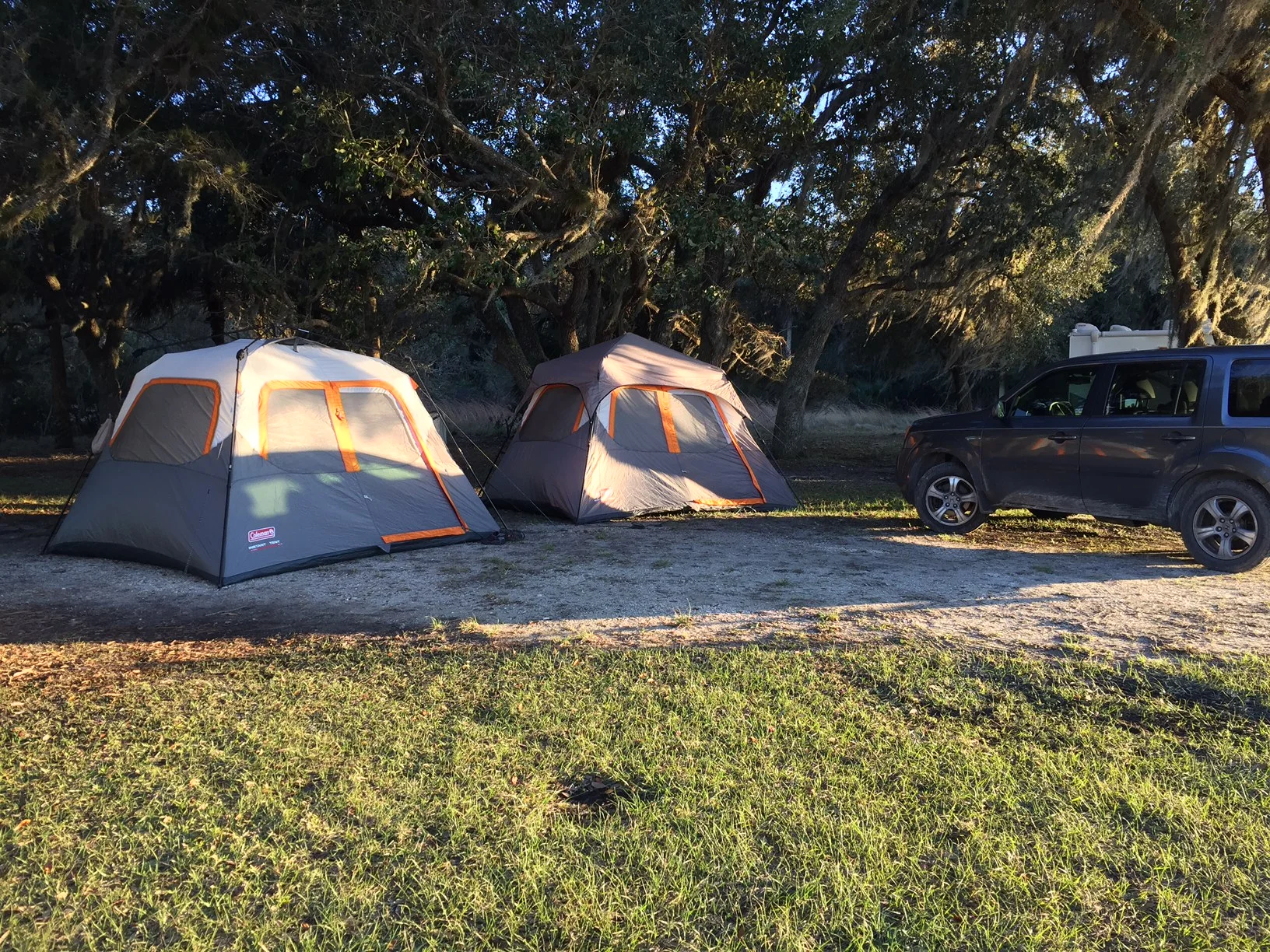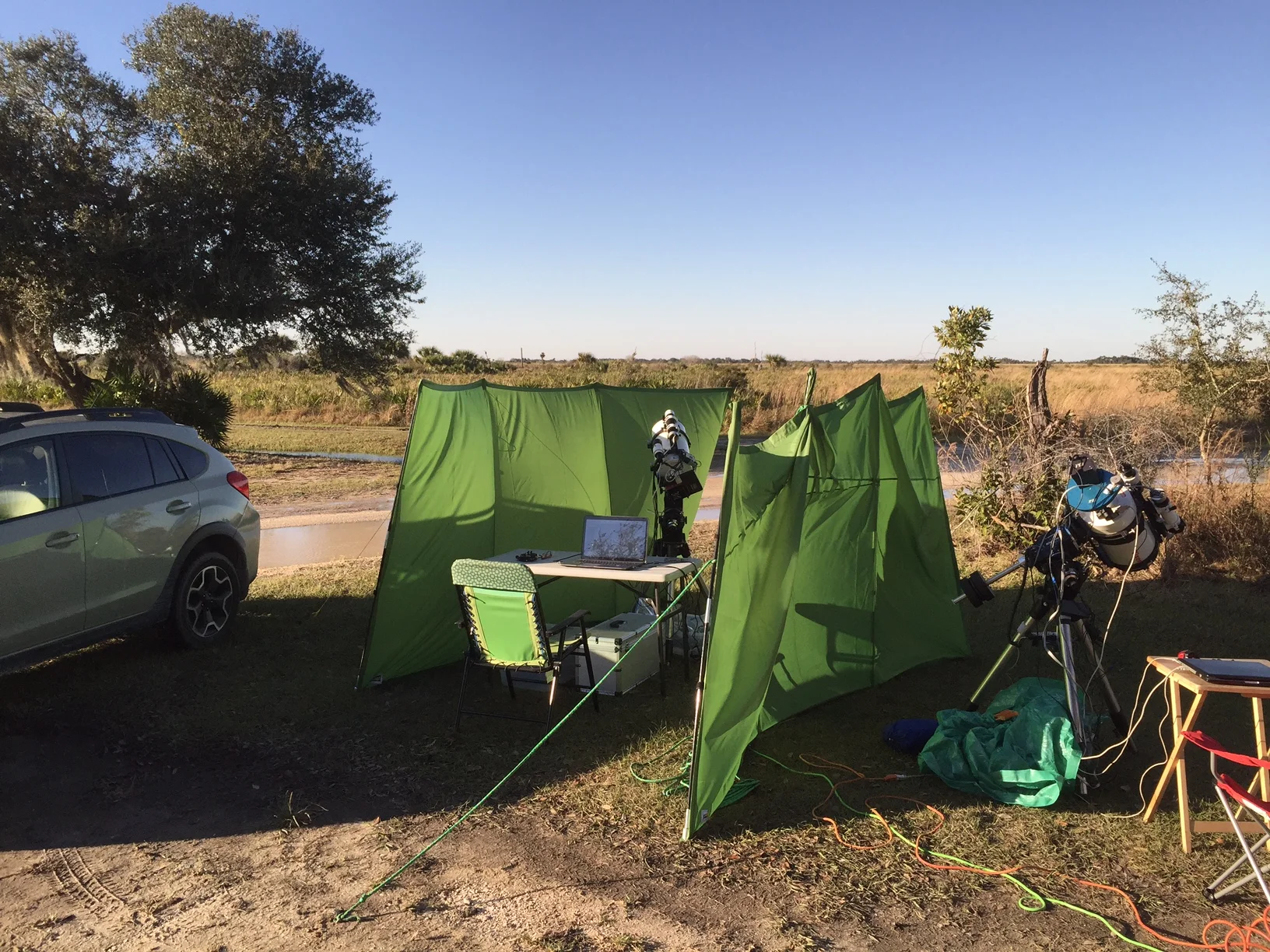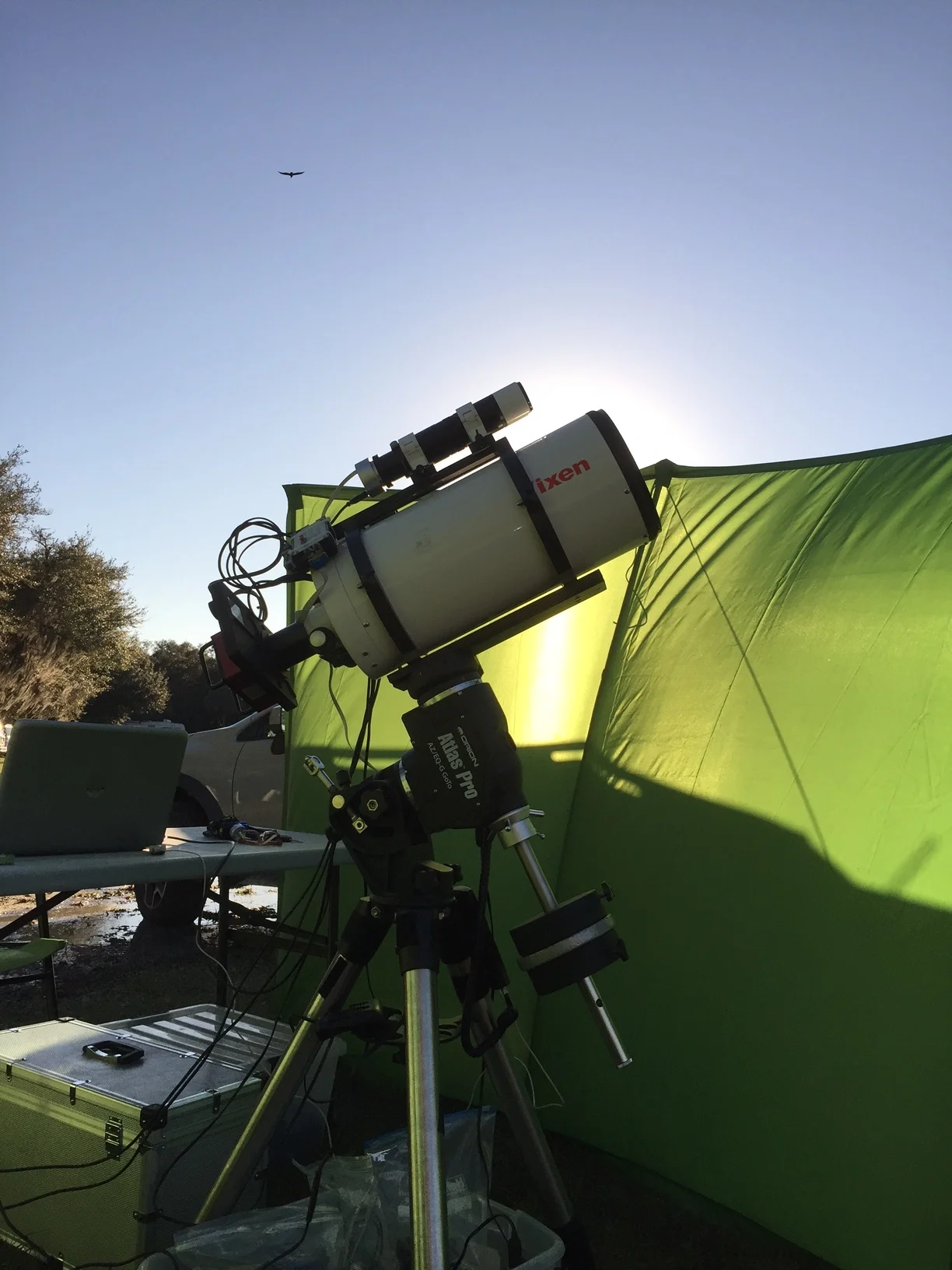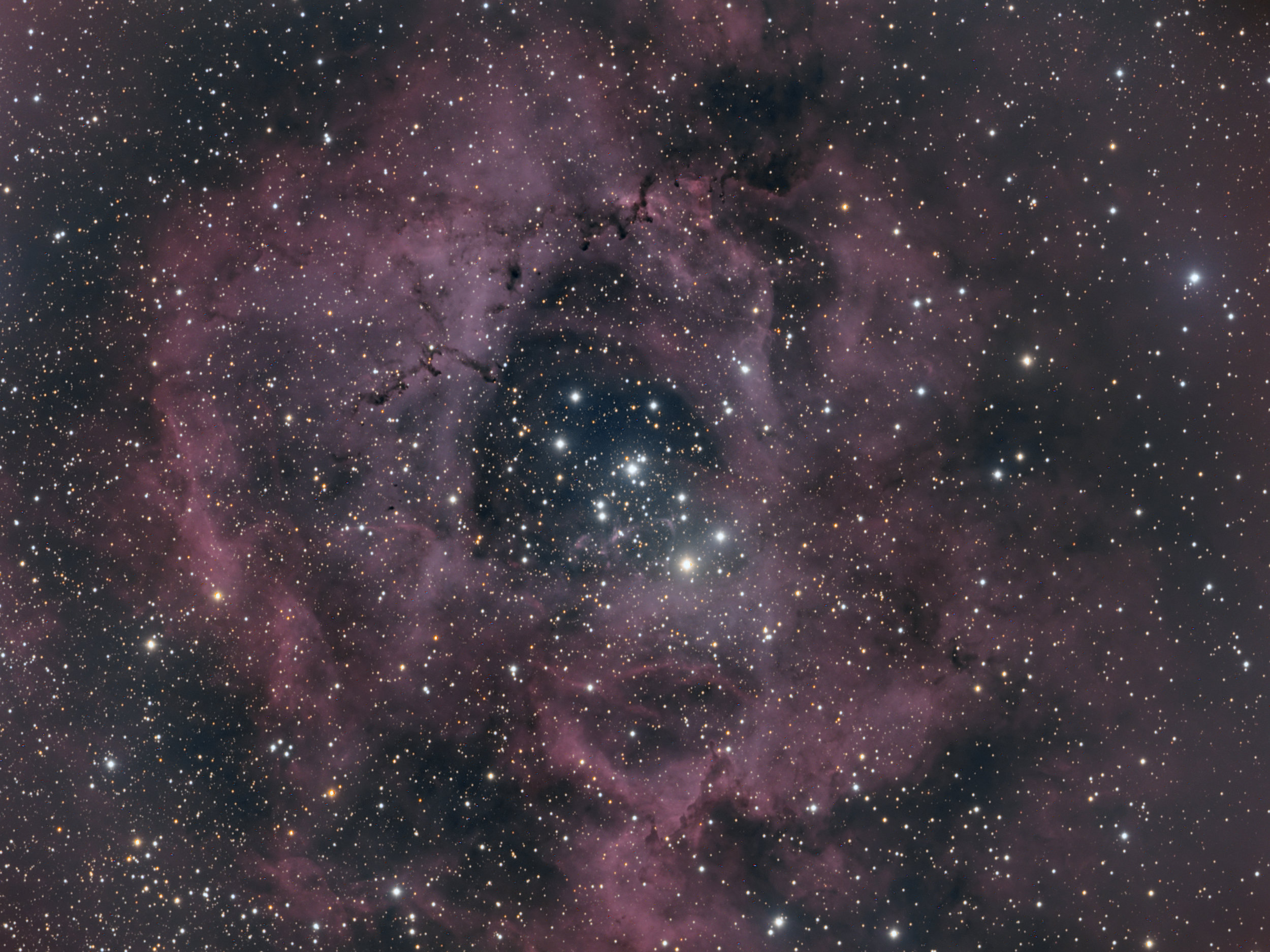2016 camping trip to Kissimmee Prarie State Park

KPP doesn't disappoint, even with more standing water than the park has scene in a decade, even with temps dipping into the mid 30's, even with winds approaching gale force speeds the night time and dark skies make it all worth while.
We were unable to set up our scopes at the usually scope pads because of standing water, so we decided to set up next to our camp site. The amount of open sky was some what limited because of the tress but we were able to get to all our deep space targets.
The "wall up" proved invaluable, not only keeping the winds at bay from the scopes but also keeping the wind from our shivering bodies that night.
Night one was just epic, cold, light wind, no bugs and very clear.
I also took along my UAV to take some areal video, I always wanted to get a birds eye view of this park and although a bit windy the UAV handled like a dream.
My main reason for camping at KPP is to take photos of deep space targets. This year I was fortunate to take home 2 beautiful images of the cosmos.
Messier 82 (also known as the Cigar Galaxy or M82) is a starburst galaxy about 12 million light-years away in the constellation Ursa Major. It is about five times more luminous than the whole Milky Way and one hundred times more luminous than our galaxy's center. The starburst activity is thought to be triggered by interaction with neighboring galaxy M81, and M82 is a member of the M81 Group. As the closest starburst galaxy to our own, M82 is the prototypical example of this type of galaxy. Type a supernova, was observed in the galaxy on 21 January 2014, see 2014 supernova. In 2014, in studying M82, scientists discovered the brightest pulsar yet known, designated M82.
The nebula Messier 78 (also known as M 78 or NGC 2068) is a reflection nebula in the constellation Orion. It was discovered by Pierre Méchain in 1780 and included by Charles Messier in his catalog of comet-like objects that same year.
M78 is the brightest diffuse reflection nebula of a group of nebulae that include NGC 2064, NGC 2067 and NGC 2071. This group belongs to the Orion Molecular Cloud Complex and is about 1,600 light years distant from Earth. M78 is easily found in small telescopes as a hazy patch and involves two stars of 10th magnitude. These two stars, HD 38563A and HD 38563B, are responsible for making the cloud of dust in M78 visible by reflecting their light.
About 45 variable stars of the T Tauri type, young stars still in the process of formation as well as some 17 Herbig–Haro objects are known in M78.
Untill next year KPP!
I’ve been a dedicated to Squarespace fan for 20 years. Love the product, people and company.

